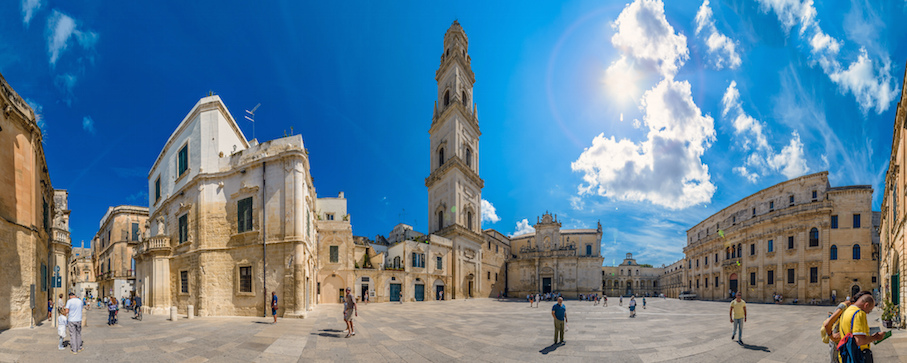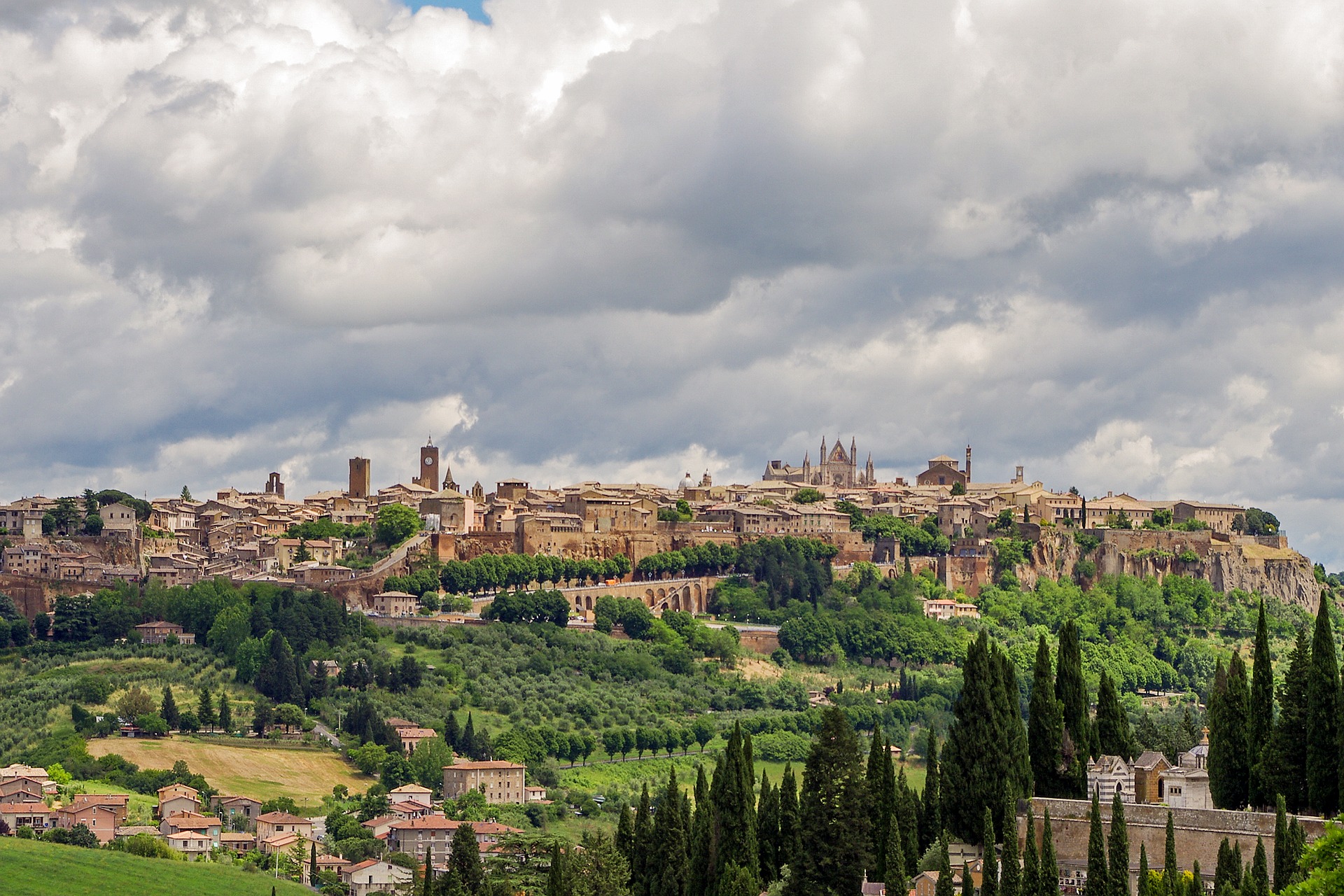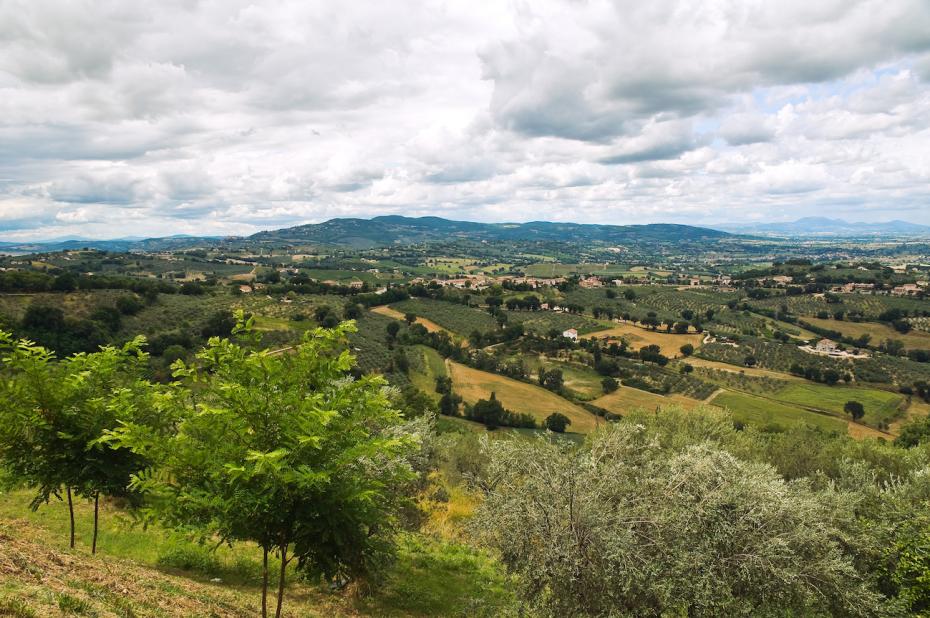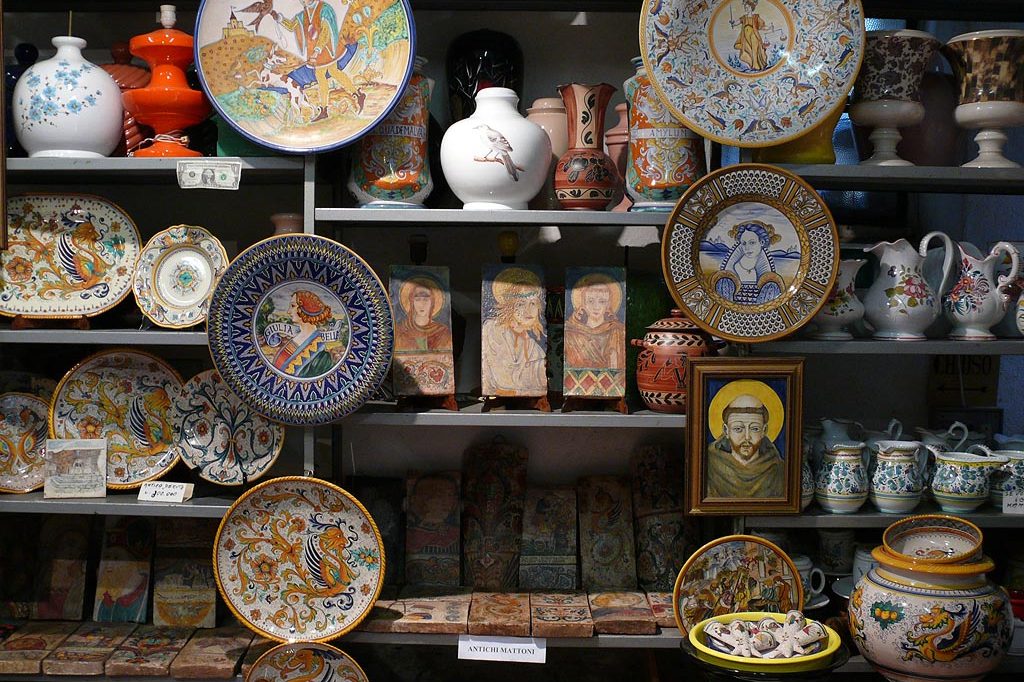Victoria takes us to Lecce, a town in Puglia which has been called the “Florence of the South”.
Like so many Italian cities, Lecce has a fascination history and story dating back thousands of years. Although touched and influenced by diverse cultures and civilizations, Lecce has retained her own unique charm.
Lecce…Yesterday
Lecce, capital of its province of Salento, is one of the most important cities of Puglia. As the main city of the Salentine Peninsula at the heel of the Italian Peninsula, Lecce’s ancient history and origins date back over 2,000 years. As with many cities and regions located in strategically desirable areas (e.g. Sicily), Lecce’s story is one of conquest and survival.
A fascinating blend of history and legend, Lecce’s origins date back before Trojan war and the Messapians or Messapii and may even be traced back to ancient Crete. Conquered by the Romans in the 3rd century B.C., Lecce (called Lupiae at the time and renamed Licea by the Romans) enjoyed a prosperous period under emperor Marcus Aurelius. Followed by a brief Greek rule, then sacked by the Ostrogoths (a branch of the later Goths), in 549 it became part of the Eastern Roman Empire and remained under Roman rule for five centuries.
Emperor Hadrian (who loved to build walls) invested in the area and today you can visit the 25,000-seat Roman amphitheatre and other ruins from this period. Then, enter the Normans under whom Lecce became, not only an important trading center but, the capital of Salento. In 1493, when Lecce became part of the Kingdom of Naples, she enjoyed the status as one of the most important towns in southern Italy. Her culture and unique architectural style, known now as Lecce Baroque, really flourished.
Over the centuries, walls and castles were built around the city, many by Charles V, to protect against possible attacks by the Ottomans. As with so many other parts of Europe, Lecce suffered from a plague epidemic in the 17th century which, thanks to the intervention of St. Oronzo (St. Horace), who became the patron saint of the city, came to an end.
It wasn’t until the early 1900’s that Lecce began to expand beyond the city walls.
Lecce…Today
Today, Lecce is a town of approximately 95,000 inhabitants. As with the rest of Puglia, she has stood in the shadow of her more famous and well-known neighbors to the north. But today, they are both is claiming their share of the spotlight and attracting a great deal of attention and tourism.
Nicknamed the “Florence of the South” or “Pearl of Salento”, Lecce is characterized by her own unique architectural Baroque style, called Leccese in Italian, which is described as a style of “richness and exuberance…(whose)… decorations…seem to want to hide the buildings rather than decorate them.”
Since pietra leccese (or poor man’s marble) is a tuffaceous stone – soft and easy to work with (but hardens over time) – local master sculptors wer able to create elaborate and fanciful stone ornamentation and “lacework” for her buildings, churches, and fortifications which, to this day, embellish the entire city and continue to delight visitors.
I can’t wait for you to join us and experience Lecce!
Let’s Visit Lecce’s Main Sights…
Piazza del Duomo or Cathedral Square is where we will find the Duomo, Cathedral of Madonna Assunta. Built in 1144 and restored in the 17th century, the Duomo received a Baroque facelift and a new bell tower.
The Basilica di Santa Croce whose elaborate façade is considered one of the finest and most intricate and detailed Baroque facades in Italy, took over 200 years to complete before it was finally opened in 1695. The Basilica is recognized as the symbol of the city.
The Church of Saints Niccolo and Cataldo, built by King Tancred of Sicily in 1180, is a Norman church whose rather austere façade was decorated in the Baroque style in the 1700’s.
The Statue of Saint Oronzo: The copper statue of Saint Oronzo (St. Horace), the beloved patron saint of Lecce stands on a column in Lecce’s old town center. The statue was a gift from the grateful citizens of Brindisi who believed that the good patron helped save their town as well as Lecce from the plague.
The Roman Amphitheatre: Earthquakes, attacks and regrettable town planning left the Amphitheatre, built at the end of the 2nd century B.C., buried and neglected until after World War II. Today, approximately two-thirds of the arena has been excavated and archeologists estimate that it held 25,000 spectators.
Church of Santa Chiara: Close to the Amphitheater, Santa Chiara is famous for its paper-maché decorated ceiling.
Il Castello di Carlo V: Charles V, Holy Roman Emperor and King of Spain, inherited vast territories of Europe, including southeast Italy. He was beleaguered by attacks from the Ottomans and consequently built a series of towers and fortifications along Puglia’s coast. One of these is the Castle (Castello) in Lecce. Built between 1539 and 1549 on the site of an existing Norman fortress, the Castle has a central courtyard and decorated halls and, today, hosts cultural and artistic events.































